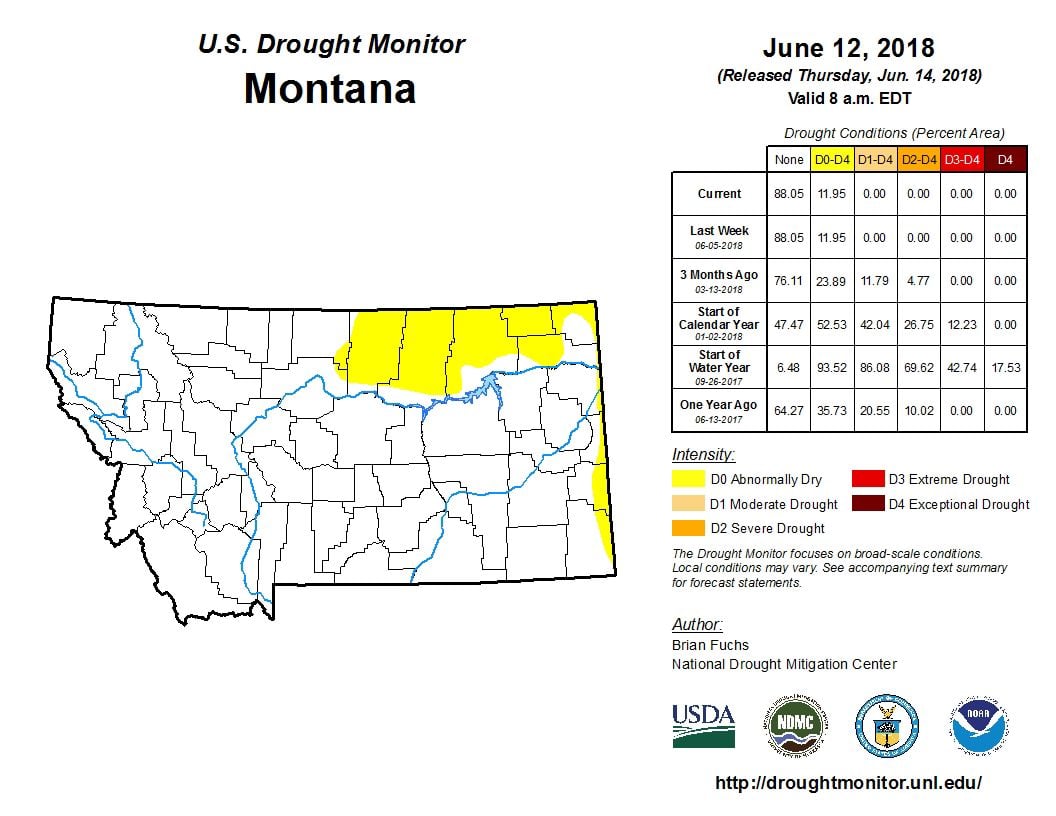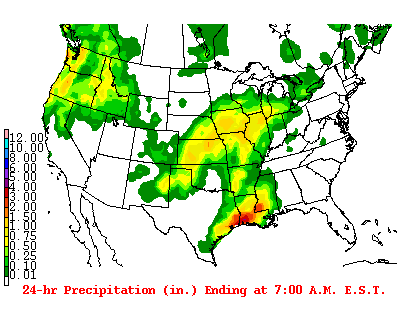

Most of the Nation west of the Appalachians, however, saw light precipitation at best. Beneficial moderate to heavy precipitation also fell on parts of the Northern Rockies, northern Intermountain West, and Pacific Northwest. A few swaths in the Upper Midwest recorded 1.5 to 3.0 inches, specifically from central to northeastern Minnesota, across much of Wisconsin and the western Upper Peninsula of Michigan, and from northeast Kansas and southeast Nebraska into southwest Iowa. Totals also exceeded 1.5 inches in parts of the central and southern Florida Peninsula, with amounts reaching 6 inches in parts of the southern Peninsula and along the eastern coastline. Over 1.5 inches fell on the south half of Mississippi and the central Gulf Coast Region from Louisiana through the Florida Panhandle, with totals of 4 to 6 inches dousing parts of southeast Mississippi, southern Alabama, and coastal Louisiana. Click on Montana Snow Survey Program.While most of the country received light precipitation at best last week, large totals fell on a few areas.


In addition, real-time snow survey data can be found at /montana. 1 can be found in the monthly Water Supply Outlook Report available on the Montana Snow Survey website.
#MONTANA PRECIPITATION TOTALS FULL#
With two to three months remaining in the typical snowpack accumulation season, some uncertainty remains in terms of what spring snowmelt will provide for water supply.Ī full report of conditions on Feb. Additionally, the one-month outlook indicates below normal temperatures are likely in western Montana and above normal precipitation is likely across all of Montana. 1, which will act as a small buffer in the event of below normal precipitation ahead.Ĭurrently the outlook from NOAA’s Climate Prediction Center indicates near-to-below normal temperature and near-to-above normal precipitation is likely over the next couple weeks across Montana. SNOTEL stations in the southern Madison and Gallatin River basins have a surplus of about two to four inches of snow-water equivalent for Feb. While that could be recovered in a couple large storms, there are only two to three months remaining to make that recovery. High elevation SNOTEL stations in the Flathead, Kootenai, Lower Clark Fork, and Bitterroot River basins are about five to seven inches of snow-water equivalent less than normal for Feb. River basins in northwest Montana have the largest deficit to recover from. “There is still time remaining to recover from any snowpack deficits, but basins that are well below normal will ideally start recovering soon in order to reach normal snowpack conditions by the end of the snow year,” said Larson. They are slightly better in the Flathead and Upper Clark Fork River basins at about 90-95% of normal. West of the divide snowpack percentages are generally worse along the Idaho border at about 80-85%. Snowpack percentages are near to above normal east of the Continental Divide, except for the Rocky Mountain Front which is currently about 80-90%. “The good news is above normal snowfall during November and December provided enough of a buffer that the snowpack is still in good condition in most locations,” said Larson. River basins west of the Continental Divide saw a 20-30% decrease in their snowpack percentages, while Rocky Mountain Front basins saw a 30-35% decrease since Jan. Snowpack percentages dropped since last month in those basins that received below normal January precipitation. The exceptions were the Bighorn, Powder, and Tongue River basins and part of central Montana, which received above normal January precipitation. Without that storm, basin-wide snowpack percentages across much of Montana might have looked similar to last year at this time,” said Eric Larson, USDA Natural Resources Conservation Service (NRCS) Water Supply Specialist.

“The storm which brought two to three feet of mountain snow in many locations during the last week of January really saved us. Most of southwest Montana received slightly less than normal January precipitation. January precipitation totals were lowest in western Montana, along the Rocky Mountain Front and in northeastern Montana. Following nearly three months of abundant precipitation across much of Montana, weather patterns changed in early January, producing relatively dry conditions for the month.


 0 kommentar(er)
0 kommentar(er)
